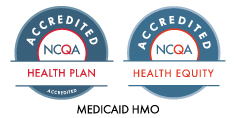
Manage Care

Asthma Medication Ratio Tip Sheet
Measure Description:
The percentage of members 5-64 years of age who were identified as having persistent asthma and had a ratio of controller mediation to total asthma medications of 0.50 or greater during the measurement year.
Incentives will be paid on an annual basis, following the end of Quarter 4. For additional information, refer to the 2021 and 2022 CBI Technical Specifications.
- Continuous enrollment during measurement year and year prior.
- Members age 5-64 who had one of the following during the measurement year and the year prior:
- 1 emergency department (ED) visit with a principal diagnosis of asthma.
- 1 acute inpatient visit with a principal diagnosis of asthma.
- 4 outpatient or observation visits with any diagnosis of asthma AND at least two asthma medication dispensing events.
- At least 4 asthma medication dispensing events.
- Members with at least 4 asthma medication dispensing events, where leukotriene modifiers or antibody inhibitors were the sole asthma medication dispensed. Member must have at least one diagnosis of asthma, in any setting, within the measurement year.
- Oral Medication
- One prescription lasting ≤ 30 days.
- Calculate dispensing events for prescriptions longer than 30 days. A 100-day prescription divided by 30 is 3 events (100/30=3.33).
- Multiple prescriptions for different oral medications dispensed on the same day count as separate events.
- Inhalers
- All inhalers of the same medication dispensed on the same day count as one event.
- Injections
- Each injection counts as one event.
- Multiple injections of the same or different medications count as separate events.
- Medication units and package size are used in numerator. Each individual medication, defined as an amount lasting ≤ 30 days, is counted as one medication.
- One medication unit is equal to:
- One inhaler canister.
- One injection.
- ≤ 30-day supply of oral medication.
Example: Two inhaler canisters of the same medication dispensed on the same day count as two medication units and only one dispensing event.
How do you calculate the AMR?
AMR (%) = # controller units of medication/# controller and # rescue units of medication
Example: Patient was prescribed and filled controllers monthly for the measurement year (N=12). The same patient filled 6 rescue inhalers (separate months) during the year (N=6). A total of 18 asthma medication events occurred.
AMR = 12/12+6 or 68%
- Members who did not have asthma medications dispensed during the measurement year.
- Diagnosis of emphysema, COPD, obstructive chronic bronchitis, chronic respiratory conditions due to fumes/vapors, cystic fibrosis or acute respiratory failure.
- Members with no asthma controller or reliever medications dispensed in the measurement year.
Asthma ICD-10 codes include: J45.21-J45.52J45.909, and J45.991-J45.998
ED visit codes: 99281-99285
Inpatient codes: 99221-99233, 99238-99239, 99251-99255, 99291
Outpatient/Observation codes: 99202-99215, 99241-99245, 99341-99350, 99381-99397, 99429, T1015
Online Assessment Codes: G0071, G2010, G2012, G2061-G2063 (expired in 2021)
For a full list of asthma medication codes, please see the CBI Technical Specifications.
Data for this measure will be collected using claims, pharmacy, and DHCS Fee-for-Service encounter claims.
- Assess asthma symptoms at every visit to determine if preventive medication action is needed (i.e. new controller medication, step up in therapy prescription, reinforcement of adherence).
- Automated telephone reminders or phone calls from asthma care nurses can improve adherence to medication by 25%.
- Prescribing a rescue inhaler? Don’t forget to discuss the importance of keeping an extra rescue inhaler at school. If both inhalers (of the same medication) are picked up at the same time, it will count as one dispensing event.
- Increase asthma medication compliance by:
- Providing education regarding the difference between a rescue inhaler versus a long-term controller.1
- Creating patient-centered interactions by listening and incorporating patients opinions into the Asthma Action Plan.
- Use the Asthma Control Test to assess asthma in your pediatric patients.2 Consider another clinically validated questionnaire for your adult patients.
- Avoid coding asthma if the diagnosis is for an asthma-like symptom (e.g., wheezing during viral upper respiratory infection and acute bronchitis is not “asthma”).
- Refer Alliance Members to the Healthy Breathing for Life program using the Health Education and Disease Management Programs Referral Form. The Healthy Breathing for Life program provides health education on risk factors, asthma trigger avoidance, medication adherence, and the use of an asthma action plan. For any questions, please call the Alliance Health Education Line at (800) 700-3874 ext. 5580.
- Prioritize patients with a low asthma medication ratio (e.g., less than 0.5).
- Flag these patients in the electronic health record (EHR) and schedule extra time at every visit (even sick visits).
- Stress the importance of smoking cessation, avoidance of environmental tobacco exposure, gastroesophageal reflux disease, and medications that worsen asthma symptoms.
- The Alliance also provides a Tobacco Cessation Support program for Alliance members in need of smoking cessation classes and support. You can refer members using the Health Education and Disease Management Programs Referral Form.
- Assist the patient in the identification of asthma triggers at home. Educate patients on the importance of an asthma-friendly home environment and perform allergen sensitivity testing if indicated. The CDC provides a home assessment checklist to assess for asthma triggers.
- Academic detailing is an innovative, multi-faceted educational outreach method that focuses on clinical topics where gaps exist between evidence-based guidelines and typical practice patterns. The goal is for the detailer and provider to develop a trusted and synergistic relationship where actionable, achievable goals are developed in alignment with best practices, all while addressing any applicable barriers. Academic detailing is available for Alliance providers. For more information, please email [email protected].
- Provide a copy of the patient’s Asthma Action Plan for school and follow up with the school to confirm access to a rescue inhaler and compliance. The school may or may not have a required form for medication administration.
Contact us | Toll free: 800-700-3874


